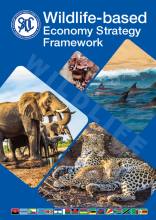Biodiversity, particularly the biodiversity of Member States of the Southern African Development Community (SADC), is gaining increased recognition for its contribution to economic and sustainable development of the individual Member States and the region as a whole. The SADC Members States have set aside large tracts of forests, wildlife and wetlands as protected areas, to conserve and protect these valuable biodiversity resources.
Although the SADC region is richly endowed with natural resources, it is also characterised by high levels of poverty. Many of the people of the Member States are directly dependent on the rich biodiversity for survival and to sustain their liveli - hoods, particularly in the rural areas of the region. The biodiversity of the region also contributes to local human health and wellbeing through the provision of clean air, potable water, medicinal plants and food, and providing crucial resources for the sustainable socio-economic development of the region.
The ability of the Member States to sustainably utilise natural resources and effectively protect the environment through the sustainably use, development, manufacturing and marketing of the exceptional biodiversity resources of the region, particularly wildlife resources, can support the SADC region in achieving their social and economic imperatives of improved quality of life, job creation, local business growth and development, inclusive economies, and poverty reduction. Strategic interventions for the sustainable use of biological resources, while ensuring conservation of these resources, can also facil - itate gender mainstreaming in the biodiversity sector and the strengthening of historical, social and cultural affinities within the region.

